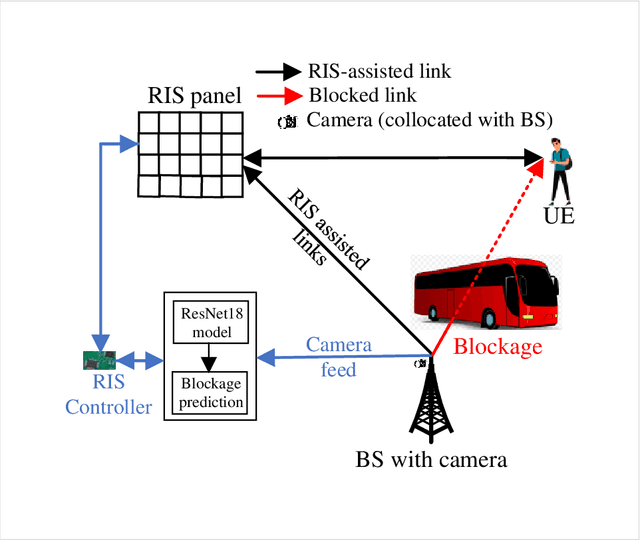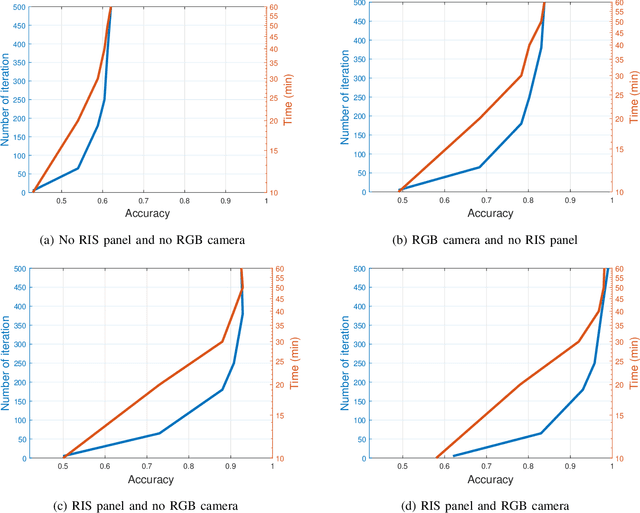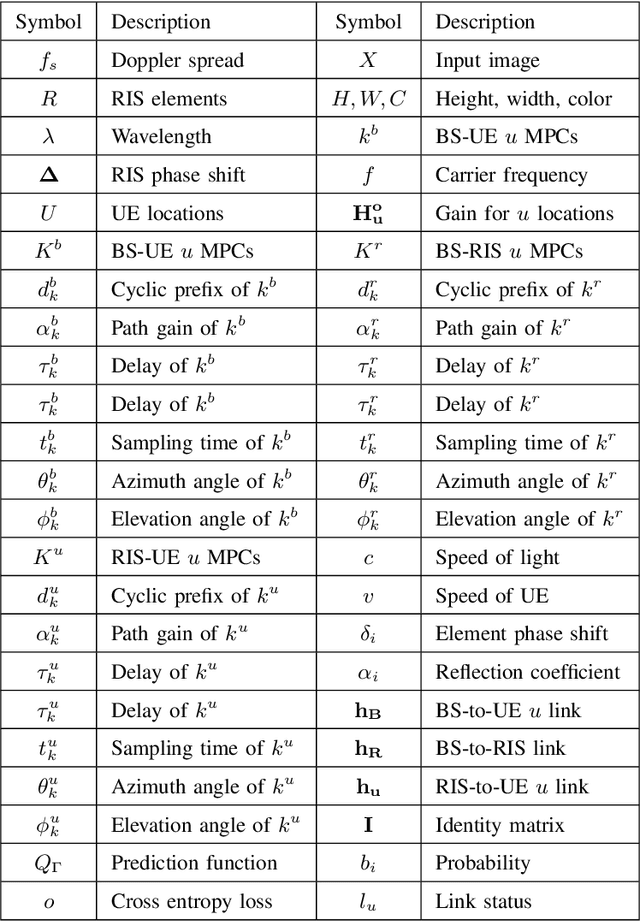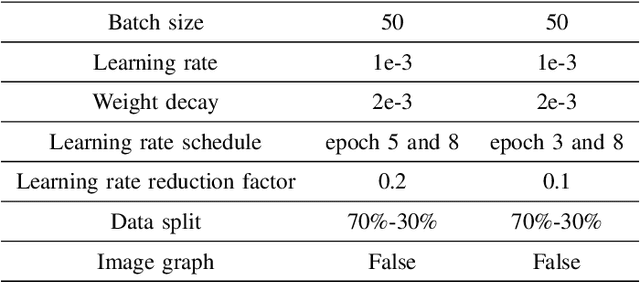Ibrahim Abdelmawla
Blockage Prediction for Mobile UE in RIS-assisted Wireless Networks: A Deep Learning Approach
Sep 22, 2022



Abstract:Due to significant blockage conditions in wireless networks, transmitted signals may considerably degrade before reaching the receiver. The reliability of the transmitted signals, therefore, may be critically problematic due to blockages between the communicating nodes. Thanks to the ability of Reconfigurable Intelligent Surfaces (RISs) to reflect the incident signals with different reflection angles, this may counter the blockage effect by optimally reflecting the transmit signals to receiving nodes, hence, improving the wireless network's performance. With this motivation, this paper formulates a RIS-aided wireless communication problem from a base station (BS) to a mobile user equipment (UE). The BS is equipped with an RGB camera. We use the RGB camera at the BS and the RIS panel to improve the system's performance while considering signal propagating through multiple paths and the Doppler spread for the mobile UE. First, the RGB camera is used to detect the presence of the UE with no blockage. When unsuccessful, the RIS-assisted gain takes over and is then used to detect if the UE is either "present but blocked" or "absent". The problem is determined as a ternary classification problem with the goal of maximizing the probability of UE communication blockage detection. We find the optimal solution for the probability of predicting the blockage status for a given RGB image and RIS-assisted data rate using a deep neural learning model. We employ the residual network 18-layer neural network model to find this optimal probability of blockage prediction. Extensive simulation results reveal that our proposed RIS panel-assisted model enhances the accuracy of maximization of the blockage prediction probability problem by over 38\% compared to the baseline scheme.
 Add to Chrome
Add to Chrome Add to Firefox
Add to Firefox Add to Edge
Add to Edge